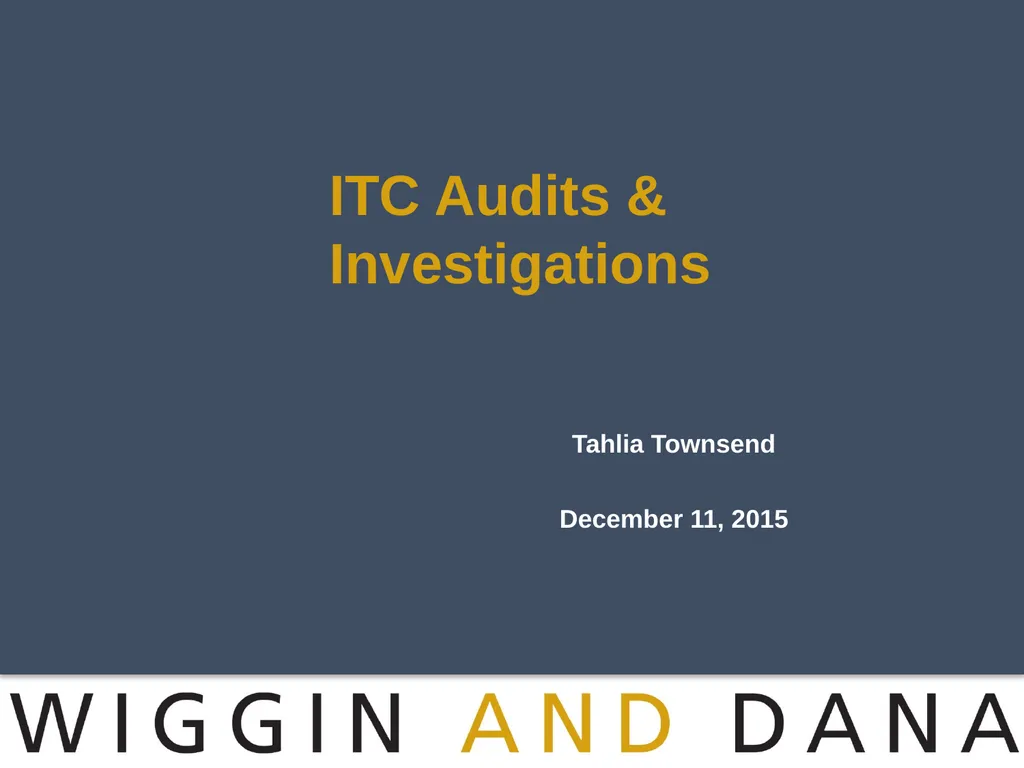
ITC Audits & Investigations Tahlia Townsend
Author: alida-meadow | Published: 2025-05-28
Description: ITC Audits Investigations Tahlia Townsend December 11, 2015 Regulatory landscape Genuine commitment at the top Proper oversight and independence Accurate, living policies and procedures Meaningful training Regular risk-based review,
Download Presentation
Download the PPT/PDF: Download
Transcript:
Loading transcript…